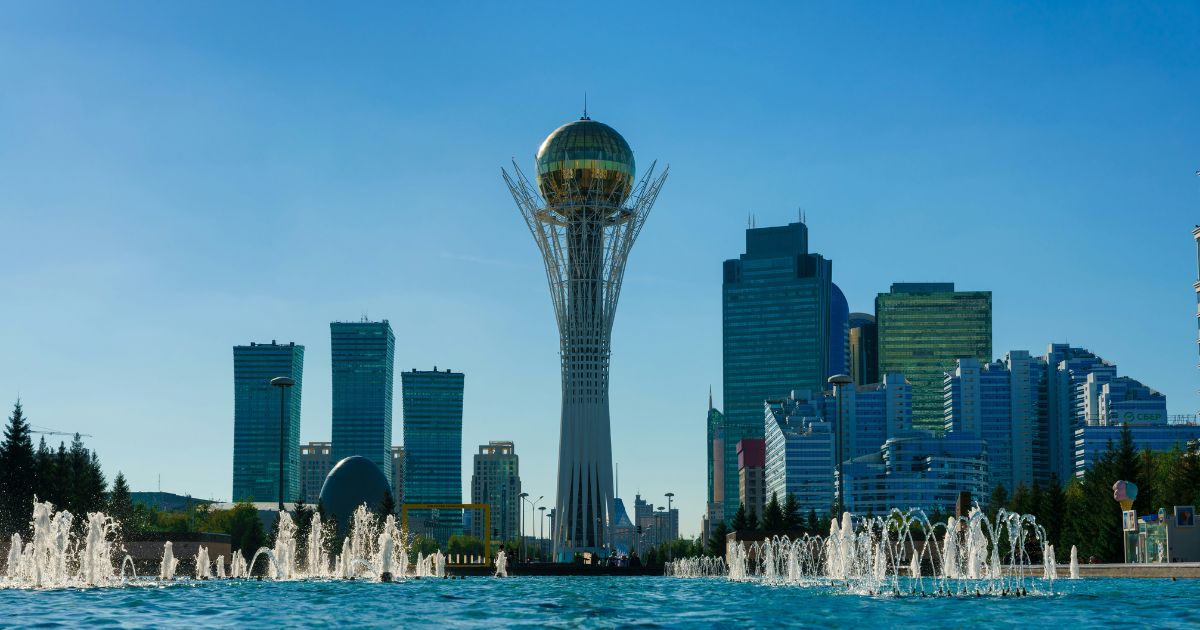They were lawyers and teachers, fired government workers and military veterans. Students and retirees, children and grandmothers.
Coming in swarms around the nation in big cities and small towns, they came dressed in costume, blasting music, waving signs, waving American flags and whooping at the sound of horns on passing cars.
The atmosphere in most venues was defiant but calm and family-oriented. Every gathering, everywhere, had the same refrain: No kings. Together, the day-long mass protest against the Trump administration on 18th October, which was conducted in thousands of locations, denounced a president whom protesters perceive as behaving like a monarch.
Several had visited one earlier in June, but the intervening months had witnessed President Trump implementing a dizzying series of changes in rapid succession.
This time, among the crowds were a fresh batch of protesters, those who claimed to be outraged by immigration raids, the sending of federal troops into cities, government firings, draconian budget reductions, the erosion of voting rights, the rollback on vaccines, the about-face on treaties with Native American tribes and the so-called One Big Beautiful Bill.
They were also joined by others in saying the administration needed to be seen to exercise basic humanity.
We can debate and argue over policies and means by which we can remedy the situation,” said Chris Scharman, an attorney who attended a Salt Lake City rally. “But we shouldn’t be arguing about people’s values.
In large cities, such as Washington, D.C., the crowds were enormous. A rally in Atlanta that had thousands in attendance at one time stretched three city blocks. A protest in San Francisco spilled out over five. A rally in Chicago ran 22 blocks in length.
Officials in New York reported that over 100,000 people protested throughout all five boroughs of the city. One of the largest gatherings was in Times Square, where the streets were filled with carnival-like surroundings characterized by gaudy, flip signs, one reading “I Pledge Allegiance to No King.” Protesters wore the inflatable frog costume that activists in Portland, Ore., started donning to mock the White House’s effort to characterize activists as anarchists or domestic terrorists.
“No more Trump!” the crowd chanted as they waved American flags.
“We’ve got to speak up for our rights, especially if we’re lucky enough to be citizens,” said Bianca Diaz whose 6-year-old daughter, Luna, came dressed as an axolotl, a kind of salamander. “I wanted her to witness this,” Ms. Diaz said.
Referenced as No Kings Day, a sequel to a June demonstration, the protests were planned at about 2,600 locations in all 50 states. They were coordinated by national and local organizations and prominent progressive coalitions such as Indivisible, 50501 and MoveOn.
The protests were even as Mr. Trump’s approval ratings in the polls have remained largely unchanged. Republican leaders criticized the protests, accusing them of extending the government shutdown and dubbing the event the “hate America rally.”
Mr. Trump’s political advisers mocked protesters on social media using AI-generated photos of the president with a crown. When queried whether the president wished to comment on the protests, White House spokeswoman Abigail Jackson provided a curt reply in an email.
“Who cares?”.
Ms. Diaz, 39, was among them. She reported hearing about the protest on TikTok and immediately knew she would go. A claims adjuster for the federal government, she hasn’t been paid since the shutdown but described herself as being in favor of the stance taken by Democratic politicians seeking to keep health care affordable. A large protest, she said, would be incentivizing for leaders seeking that.
“Protesting is the only way to get our voices out,” said 17-year-old Libby Smith, who went to a rally in Pittsburgh. Her dreams of joining the military after high school were deflated when Defense Secretary Pete Hegseth let go of a series of female leaders and stated that he wanted women out of combat.
400 miles southwest in Richmond, Ky., where the president has comfortably won the last three general elections, protesters occupied the sidewalk in front of the local courthouse.
Some passing drivers jeered and hurled pro-Trump epithets, but others seemed to honk approval.
“This is what democracy looks like!” the protesters chanted, led by a woman with a megaphone. “No kings, no kings, no kings in America!”
Portland, Ore., protesters, whose city and state leaders were battling the president in court over his intention to send the National Guard there to stem what he described as out-of-control violence, participated in three successive marches that ultimately merged into one.
“We’re out here today to prove people wrong about this not being a war zone,” said Shawnathan Thibodeaux, 37, a history teacher at a middle school who came with his wife and 4-year-old son. “The end goal of portraying this city in such a manner is frightening. We are silly and peaceful and still Portland.”
Strangers across the nation encountered each other and exchanged their lengthy lists of grievances with each other: the government shutdown, the tariffs, Mr. Trump’s assault on higher education, the pressure he has imposed upon the Justice Department to prosecute political foes,, erosion of women’s rights, and cancellation of D.E.I. initiatives.
While a few rallies had small numbers of counterdemonstrators and police presence, the atmosphere at most was festive and cheerful. Children and families dominated at a Washington demonstration. (Hours after a huge rally concluded in Los Angeles, approximately 100 protesters held an intersection before police officers in riot gear broke up the crowd, the police added.)
In San Francisco, a group of farmers market vendors ringed in the crowd and shouted, “Keep calm, keep marching!” Outside Grant Park in Chicago, thousands of festival-goers cheered in appreciation as speakers addressed the crowd, including Illinois governor JB Pritzker, who called on protesters to spurn the notion of an unlimited government.
Marilyn Ricken, 80, was among the attendees, who came with three friends, two of whom depended on walkers to walk.
Retired insurance broker Ms. Ricken had attended the No Kings rally in June but indicated Saturday’s action came with an added sense of urgency. “This is how change happens,” she said as other protesters to her left signed their names on the bottom of a large copy of the U.S. Constitution.
In solidarity, demonstrators across the globe marched outside American embassies, consulates or town plazas, such as in Prague, Vienna and Malmo, Sweden.
In Paris, demonstrators lifted placards protesting Mr. Trump. In Germany, there were demonstrations scheduled in four cities, including one in front of the Brandenburg Gate in Berlin. In nations that have long monarchies, such as Britain and Spain, protesters convened under the banner “No Tyrants.” In San Miguel de Allende, Mexico, signs were carried in bright colors protesting ICE.
The intensity of Mr. Trump’s second term might have energized demonstrators, said Jeremy Pressman, a political science professor and co-director of the Crowd Counting Consortium, a collaborative effort of the Harvard Kennedy School and the University of Connecticut.
“The intensity of the action is going to feed into the intensity of the counteraction or counterprotest,” he said.
Several demonstrators reported being encouraged by encountering peers.
“You feel like your voice isn’t that loud,” said Michael Flanagan, 46, a medical administrator who attended a rally in Memphis, where the National Guard was recently deployed. “But I’ve never seen this level of enthusiasm.”
In Manhattan, two sisters, Joyce Pavento, 75, of Marlborough, Mass., and Diane Hanson, 78, of Narragansett, R.I., were similarly encouraged, albeit to some extent. They had felt obligated to come to New York City for the protest.
Ms. Pavento reported enjoying the fellowship of people of similar beliefs but questioning whether their attendance made a difference in the end.
Despite a lack of optimism and fears, the sisters concurred they couldn’t stand being at home.
“What option do we have?” Ms. Pavento posed.
“This is everything we have,” Ms. Hanson replied.




